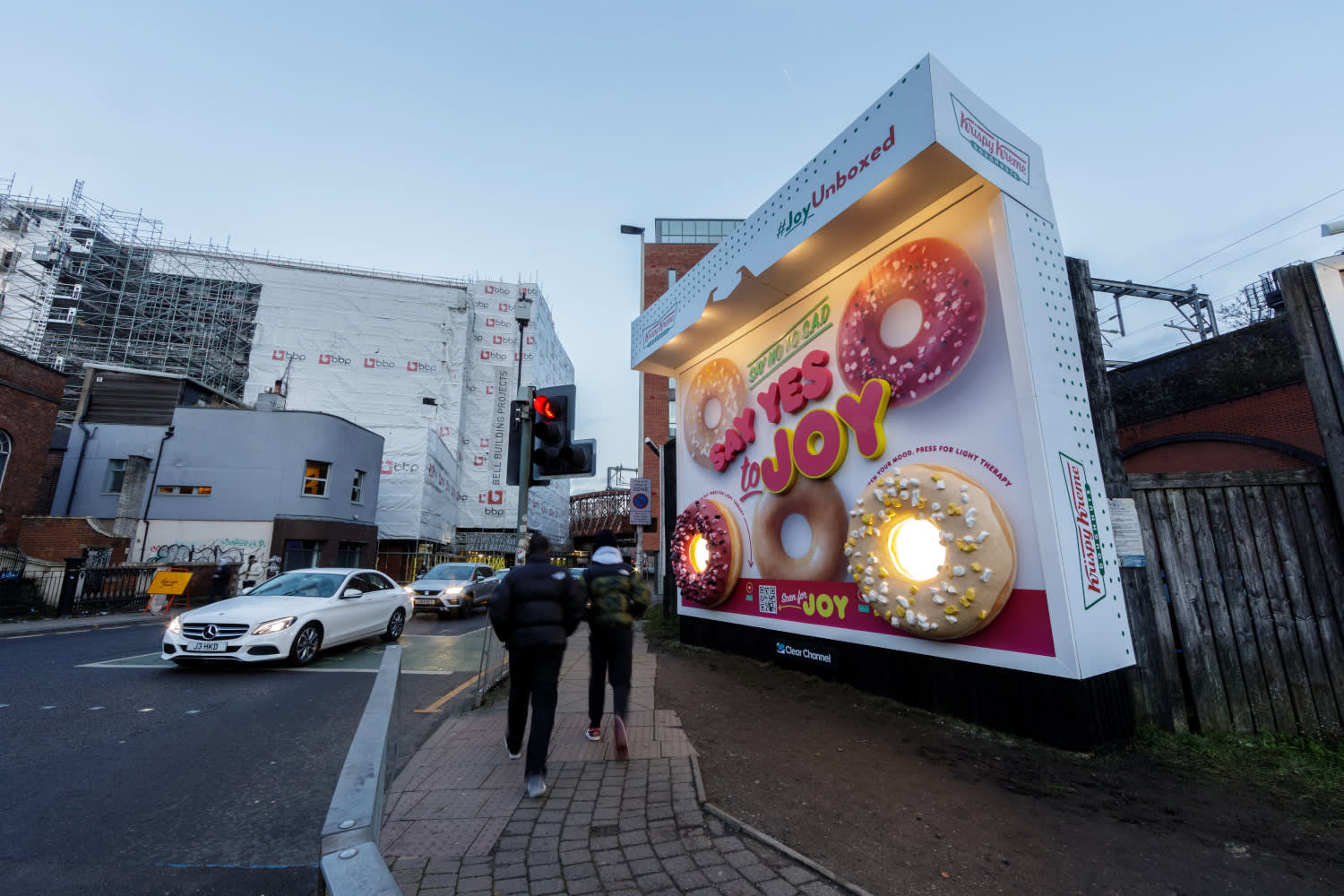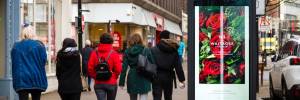One of the biggest developments in the advertising world over the past few years has been 3D advertising. Although 3D illusions have been around for as long as billboards themselves, the rise of digital technology has transformed what’s possible with this innovative medium.
In this blog, we’ll explore 3D advertising, including how it works and why it’s so successful. We’ll also take a look at some examples of 3D billboards – let’s dive in.

What is 3D advertising?
3D advertising is a type of marketing that uses special elements or visual techniques to make content look three-dimensional. These techniques include stereoscopic imaging, holography, parallax, augmented reality (AR), and other methods.
By creating the illusion of depth and dimension, content seems to jump off the screen or board on which it’s displayed. This makes it more eye-catching to viewers and helps to foster an immersive, engaging experience.
3D advertising is used across various mediums, including print and TV. However, the most common types are 3D billboards and web-based 3D ads.
Web-based advertising often uses 3D graphics and AR to create fun, interactive experiences for smartphone or computer users. 3D advertising billboards, on the other hand, utilise a mix of digital and physical techniques to display 3D adverts on outdoor signage.
Why does 3D advertising work?
3D advertising works primarily because of its superior ability to capture attention, but there’s more to it than that. These are the key reasons why 3D advertising is effective:
Psychological effect – Human brains are wired to perceive the world around us in a certain way. When something disrupts that perception, as 3D adverts do, our curiosity is piqued and our attention grabbed.
Immersive storytelling – 3D adverts transcend the confines of conventional advertising to offer something more interesting than flat, 2D visuals. Instead, brands can tell their stories through immersive experiences that trigger stronger emotions and engage audiences on a deeper level.
Memorable impact – 3D ads stand out from the crowd, making them easier for viewers to remember. This has a positive effect on brand awareness, with one study showing that 3D billboards achieve greater attention, ad recall and ad recognition than traditional billboards.
The effectiveness of 3D advertising is grounded in its ability to tap into fundamental aspects of human perception and cognition. By leveraging these innate traits, the medium is able to create distinctive experiences that leave a lasting impression on audiences.
What are 3D billboards?
3D billboards are a form of Out of Home (OOH) advertising that uses advanced technology and innovative designs to create a 3D appearance. 3D billboard advertising can be implemented on both static and digital billboards, though different methods are required.
Static 3D billboards
Static 3D billboards are created by employing various artistic techniques and optical effects. They often require a ‘special build’, as they can contain bespoke elements that extend beyond the borders of a standard billboard.
3D digital billboards
3D digital billboards use a range of specialised technology to create three-dimensional visuals. Digital billboards are dynamic and typically equipped with high-resolution screens, so they can be used to display ultra-realistic, 3D moving images.

How do 3D billboards work?
Almost all 3D billboards work by relying on what’s known as ‘forced perspective’. This refers to the concept of influencing how an object is perceived by the naked eye through the use of optical illusions.
These optical illusions can be created using physical elements or digital technology, depending on which type of billboard is being utilised. Some of the techniques most often used are:
Layering – different elements of varying sizes are layered over each other to produce a 3D appearance.
Stereoscopy – where a different image is presented to each eye, creating a false perception of depth.
Anamorphism – where an image is intentionally distorted so that it appears 3D when viewed from a certain angle.
Colour manipulation – using colour, shading and texture to create the illusion of depth.
Holography – using laser technology to create 3D visuals that appear to float in space.
Each technique creates a unique effect, whether used individually or in combination. And while it’s easy to assume that more advanced processes like holography and stereoscopy are superior, sometimes the simplicity of layering or shading is exactly what’s needed for a specific campaign’s aesthetic.
The benefits of 3D billboard advertising
As we’ve already discussed, 3D advertising works because of its ability to capture attention and help brands differentiate themselves from the competition. These aren’t the medium’s only benefits though – here are some of the other top reasons to choose 3D billboard advertising.
Enhanced engagement
3D billboards create novel and immersive experiences that can lead to increased audience engagement.
Longer dwell time
viewers can spend more time looking at or interacting with a 3D billboard as they try to figure out how it works.
Memorability
3D billboards are still very rarely seen compared to traditional 2D ones, making them far more memorable to passing audiences.
Increased brand awareness
it’s not uncommon for innovative 3D billboards to generate a buzz on social media, which can help brands reach new audiences and build awareness organically.
Examples of innovative 3D billboards
Whether using digital technology or physical elements, 3D billboards are some of the most creative that exist. Here are some of the most innovative examples of 3D billboards that we’ve seen.
Simply Roasted
Simply Roasted went for a ‘packvertising’ theme with their 3D billboard installation. The giant-sized replicas of their minimalist crisp packets prove that you don’t need fancy tech to make a statement 3D billboard.
Maybelline
To advertise their new ‘Surreal Falsies Mascara’, Maybelline opted for a surreal 3D billboard. Displayed on our Malls Live XL screens, the creative shows a model seemingly reaching out of the screen to grab the mascara.
Parkway Drive
Parkway Drive decided to promote their latest album, ‘Darker Still’, with a special 3D billboard. Clever shading and lighting were used to add dimension to the head depicted on the album cover. Passers-by could also scan a QR code to see an AR version.
Embrace the potential of 3D advertising
In the marketing landscape, 3D advertising stands out for its ability to captivate and intrigue audiences. It’s disruptive, immersive and gets people talking. To embrace its full potential, get in touch with us to discuss how 3D billboards can help you achieve your goals.
Start your OOH campaign
Interested in learning more about OOH advertising? Fill in our form and one of our team will be in contact shortly to answer your questions and get started on your next campaign.



